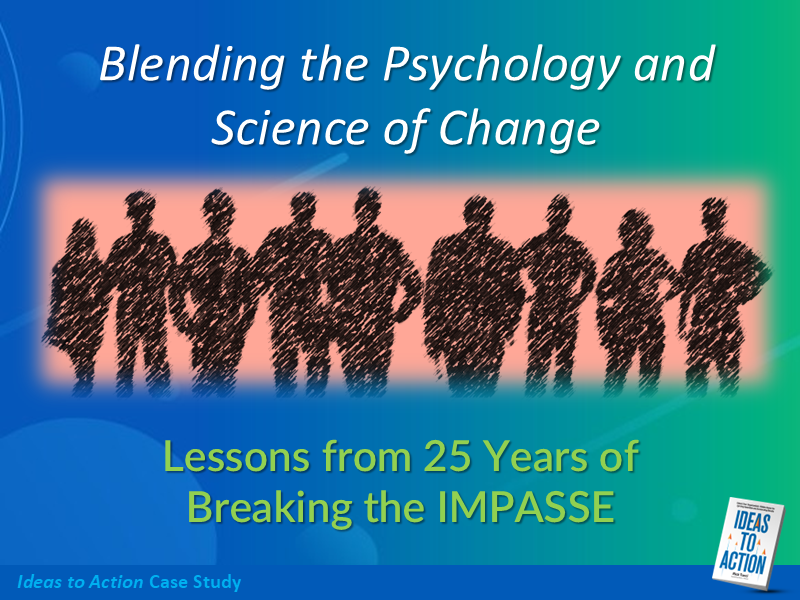Change initiatives aren’t failing because leaders lack ambition or employees lack intelligence. They’re failing because the playbook itself is broken.
For decades, conventional change management has relied on the same formula:
- Convince employees of the “why.”
- Launch a communications blitz.
- Roll out town halls, surveys, and training.
And yet, study after study shows the same result: up to 70% of these efforts stall or collapse.
Enthusiasm fades. Momentum stalls. Employees disengage.
Why? Because persuasion and compliance don’t create ownership. At best, they create the Illusion of Engagement—what’s recently been called quiet quitting. Employees nod along, but they’re not invested. Leaders double down, managers strain under directives, and frontline wisdom gets ignored.
Breaking the Endless Cycle: The Long Arc of Proof
Over 25 years, we’ve seen a different path.
From early application at the Department of Defense, to global deployment at Waste Management, to industrial-scale breakthroughs at IMC Global, to crisis intervention at the SBA in the wake of Hurricane Katrina, and then hundreds of organizations across industry, healthcare, and the public sector—the lesson has been consistent: conventional approaches aren’t enough to create ownership for change at the frontlines.
Leaders like Steve Preston at the SBA, John Biedry at Waste Management and IMC Global, and Paul Foley at Northwest Airlines chose a different path. They trusted employees to lead change with their own ideas. And the results were transformative.
Proof in the Toughest Environments: IMC Global
Consider IMC Global, one of the world’s largest mining and fertilizer producers. John Biedry, who had earlier scaled the Ideas-to-Action Process™ globally at Waste Management, brought the method into IMC to complement Six Sigma.
While Black Belts tackled complex problems with data and analysis, frontline miners and engineers used Ideas-to-Action to drive improvements in energy use, shift productivity, and load optimization.
Within 12 months, over 200 employee-driven solutions were implemented, delivering more than $2 million in documented savings.
As Biedry noted:
“Six Sigma gave us rigor, but it wasn’t going to touch the whole workforce. Ideas-to-Action brought everyone into the game, delivering results in weeks—not years.”
This blending of psychology (trust, ownership, engagement) and science (rigor, measurement, discipline) is what makes the approach universal—effective in waste hauling, mining, government, and beyond.
Psychology + Science = Breakthrough
What made these successes possible wasn’t just enlightened leadership. It was the combination of two interlocking forces—like gears in an engine:
- Psychology of Change: Trust, ownership, confidence, consensus. Employees need to feel their ideas matter.
- Science of Change: Facts, discipline, measurable results, structured sprints. Leaders need proof that ideas deliver impact.
When these gears mesh, employees stop being passengers and start driving transformation.
This is the foundation of the Ideas-to-Action Process™: a sprint-based, employee-powered framework that blends the human drivers of change with practical, fast-moving discipline.
The Takeaway for Leaders
Conventional change management is broken because it treats employees as passengers.
The fix is deceptively simple but transformative:
- Treat employees as partners in shaping change.
- Give them the tools and process to turn their ideas into results.
- Scale it with discipline so wins build momentum.
When leaders do this, change doesn’t just “happen”—it accelerates. Employees stop resisting. They start driving.
Call to Action
This case study is part of the Ideas to Action Case Study Blog Series with Rick Tucci, author of Ideas to Action: Unlock Your Organization’s Hidden Genius to Ignite Innovation and Accelerate Results.
✔ Get the book on Amazon
✔ Explore more case studies and resources
✔ Watch the companion video newsletter on YouTube


